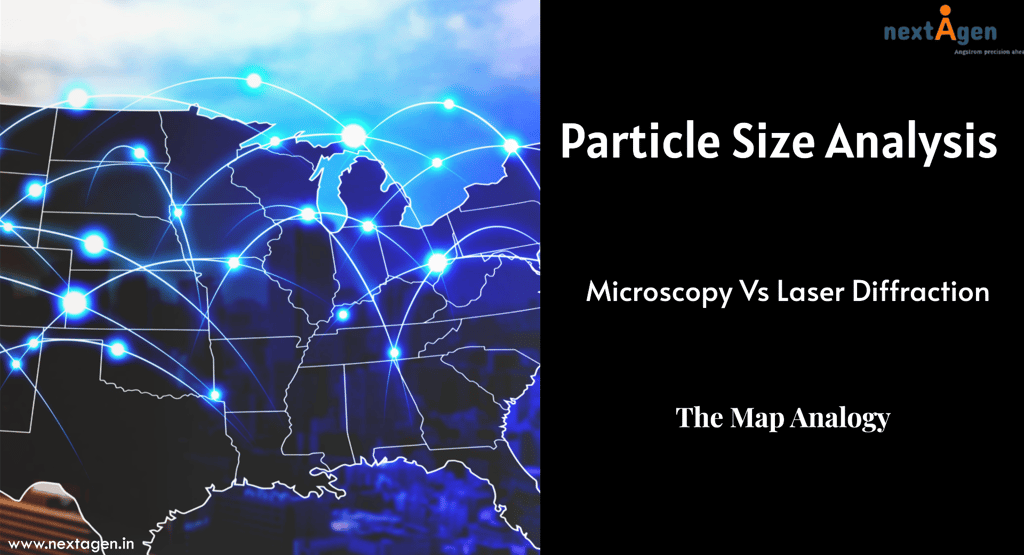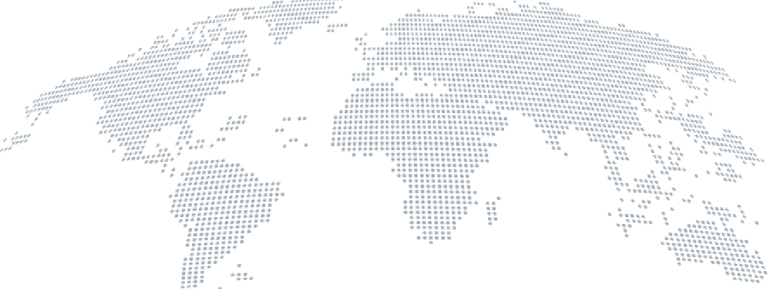Navigating Particle Size Analysis with Precision: The Map Analogy
PARTICLE SIZE ANALYSER
Nextagen analytics
2/3/20254 min read


In a world increasingly reliant on accuracy and efficiency, the tools we use to gather information and make decisions play a pivotal role in determining outcomes. Consider the importance of a map for navigation. A basic map that only shows major roads might suffice for a casual trip, but it can’t guide you effectively through complex routes, identify local landmarks, or help you understand the terrain. On the other hand, a high-resolution GPS map provides unparalleled clarity, showing every street, landmark, and elevation, ensuring you navigate with confidence and precision.
This analogy perfectly reflects the difference between laser diffraction and microscopy with image analytics in particle size analysis. Laser diffraction is like the basic map—convenient and fast but ultimately oversimplified and incomplete. It assumes all particles are spherical, ignoring critical morphological details. Conversely, microscopy and image analytics are akin to a high-resolution GPS map, providing detailed insights into particle size, shape, and distribution, allowing for smarter, data-driven decisions.
As industries evolve and demand precision, quality, and compliance, it’s time to move beyond the limitations of laser diffraction and adopt cutting-edge microscopy and image analytics. Let’s explore this analogy in depth to understand why microscopy and image analytics are the rational, forward-thinking choice for particle size analysis.
Laser Diffraction: The Basic Map
Laser diffraction is a long-standing particle sizing technique valued for its speed and simplicity. It measures the scattering of light as it passes through a sample and calculates particle size based on this data. While this method has been widely adopted across industries, it operates under one major assumption: all particles are spherical.
The Oversimplification Problem
Imagine navigating an unfamiliar city with a low-detail map. Major roads might be visible, but you have no idea where smaller streets, traffic detours, or local landmarks are located. This lack of detail could lead to:
Wrong turns (misinterpretation of data),
Missed opportunities (overlooking critical details), and
Inefficient routes (suboptimal processes).
Similarly, laser diffraction provides a broad approximation of particle size but fails to capture the complexities of particle shape and morphology. This oversimplification leads to:
Inaccurate particle size distribution data,
Critical morphological details being ignored, and
Potential errors in quality control and product development.
For industries like pharmaceuticals, coatings, or food, where particle shape and size directly impact product performance, these inaccuracies can have significant consequences.
Microscopy and Image Analytics: The High-Resolution GPS Map
In contrast, microscopy and image analytics provide a granular view of particle size and shape. By directly visualizing particles, these methods go beyond mere size measurements to include morphological data such as:
Shape (spherical, elongated, irregular, etc.),
Surface texture, and
Distribution patterns.
Navigating with Clarity
Using microscopy is like switching to a high-resolution GPS map. Suddenly, you can see every street, landmark, and terrain feature. This clarity allows you to:
Make better decisions based on precise, actionable insights,
Identify potential challenges before they arise, and
Optimize processes for greater efficiency and accuracy.
Microscopy eliminates assumptions and provides visual proof, ensuring that your particle analysis is accurate, reliable, and meaningful.
Why Morphological Data Matters
Just as terrain details on a map can influence your travel decisions, particle morphology plays a critical role in product performance across various industries:
1. Pharmaceuticals
Particle shape impacts drug solubility, dissolution rates, and bioavailability. Mischaracterizing particles can lead to ineffective drugs or compromised safety.
2. Coatings and Paints
In the coatings industry, particle shape influences viscosity, adhesion, and overall appearance. Ignoring morphology can result in poor product performance and costly reformulations.
3. Food and Beverages
Texture and consistency are essential in food production. Morphological analysis ensures that these parameters meet quality standards, enhancing customer satisfaction.
4. Mining and Minerals
In mining, particle shape determines separation efficiency in processes like flotation and filtration. Misleading data from laser diffraction can lead to wasted resources and operational inefficiencies.
Microscopy provides the level of detail needed to address these challenges, ensuring better outcomes and long-term success.
ImageProVision Technology : Transforming Particle Size Analysis
While traditional microscopy is powerful, it can be time-consuming and labor-intensive. ImageProvisions takes this technology to the next level by integrating automation and advanced analytics, making particle size analysis faster, easier, and more reliable.
Key Features of ImageProVision Technology
High-Resolution Imaging Capture every detail of your particles, from size to shape, with unmatched accuracy.
Automated Analysis Streamline the particle analysis process with automation, reducing manual errors and saving time.
Comprehensive Insights Gain a complete understanding of particle size and morphology with advanced analytics.
Regulatory Compliance ImageProvisions tools are fully compliant with industry standards, including 21 CFR Part 11, ensuring that your processes meet the highest regulatory requirements.
Game-Changing Tools
IpvPClass: A particle size analyzer and classifier that ensures precise size and shape analysis.
IpvAutoClass: An automatic microscopic particle classifier that combines speed and accuracy for seamless operations.
Seeing Is Believing: The Power of Visualization
One of the biggest advantages of microscopy and image analytics is the ability to “see” your particles. Visual data eliminates assumptions and provides undeniable evidence of:
Product consistency,
Process accuracy, and
Regulatory compliance.
This visual proof not only builds confidence among stakeholders but also strengthens your ability to communicate findings effectively.
Why It’s Time to Switch to Microscopy and Image Analytics
As industries grow more complex and competitive, the need for precise and reliable particle size analysis becomes even more critical. Microscopy and image analytics provide the clarity and accuracy needed to stay ahead, ensuring that your processes are optimized and your products meet the highest standards.
Laser diffraction may have been a convenient tool in the past, but it no longer meets the demands of modern industries. Just as a basic map is insufficient for navigating today’s complex cities, laser diffraction falls short in delivering the detailed insights required for effective particle analysis.
A Call to Action: Choose the Right Path with ImageProVision Technology
In particle size analysis, as in navigation, clarity is everything. With ImageProVision Technology advanced microscopy and image analytics tools, you can move beyond the limitations of laser diffraction and embrace a future of accuracy, efficiency, and compliance.
Don’t rely on outdated methods that limit your potential. Choose the high-resolution GPS map—choose ImageProVision Technology.
Because in particle size analysis, as in life, Seeing is believing.


Innovation House
Mon-Sat 9am-7pm

contact@nextagen.in

+91 2654059388
© 2024 Nextagen Analytics Private Limited . All Rights Reserved.